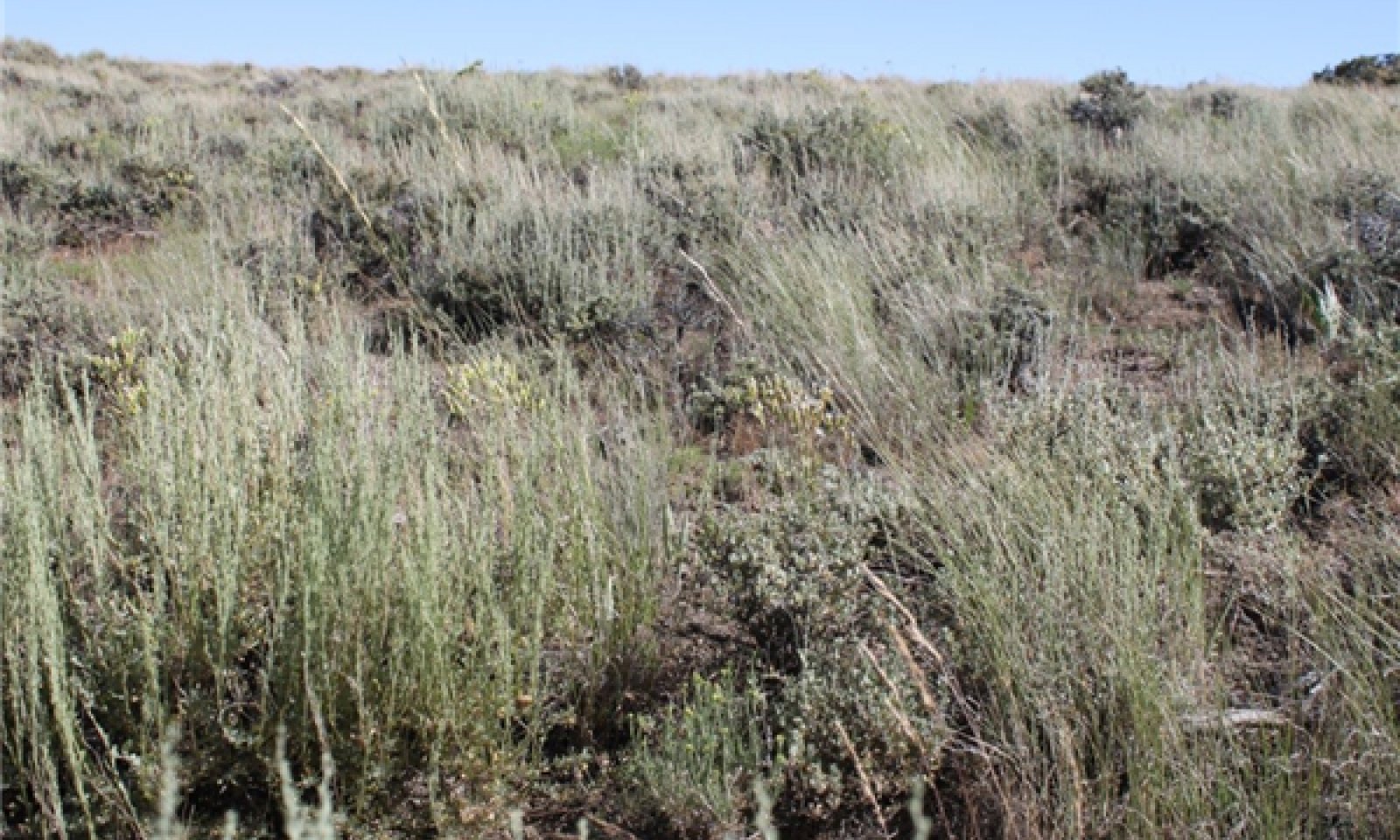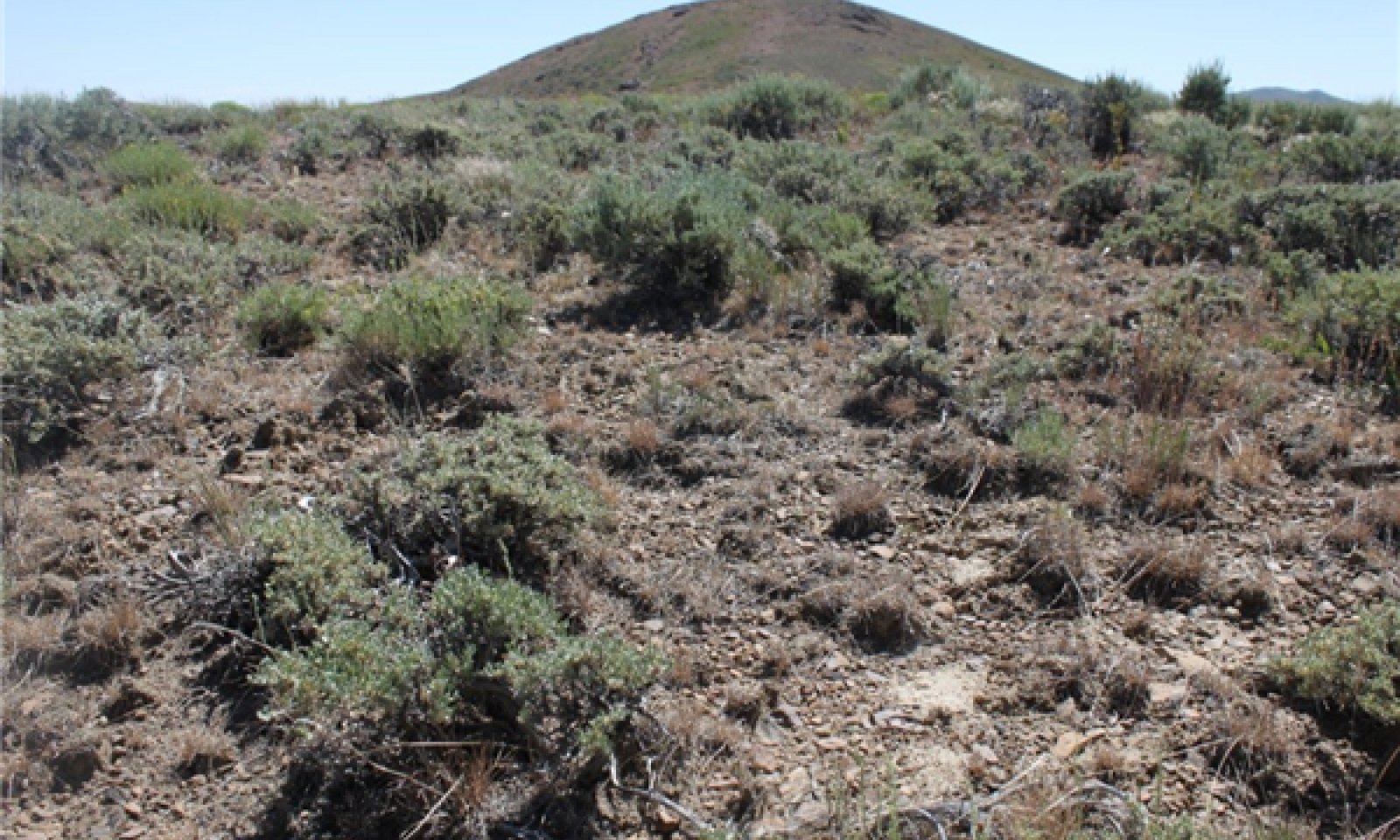
SHALLOW CLAY LOAM 10-14 P.Z.
Scenario model
Current ecosystem state
Select a state
Management practices/drivers
Select a transition or restoration pathway
- Transition T1A More details
- Transition T2A More details
- Transition T2B More details
- Transition T3A More details
-
No transition or restoration pathway between the selected states has been described
Target ecosystem state
Select a state
Description
The Reference State is a representative of the natural range of variability under pristine conditions. The reference state has three general community phases; a shrub-grass dominant phase, and a shrub dominant phase and a grass dominant phase. State dynamics are maintained by interactions between climatic patterns and disturbance regimes. Negative feedbacks enhance ecosystem resilience and contribute to the stability of the state. These include the presence of all structural and functional groups, low fine fuel loads, and retention of organic matter and nutrients. Plant community phase changes are primarily driven by fire, periodic drought and/or insect or disease attack. Utah juniper may be present on the site, but will only occur as scattered trees and will not dominate the site.
Submodel
State 2
Current Potential State



Description
This state is similar to the Reference State 1.0, though a fourth community phase exists. Ecological function of community phases 2.1, 2.2 and 2.3 has not changed, however the resiliency of the state has been reduced by the presence of invasive weeds. Non-natives may increase in abundance but will not become dominant in this state. These non-native species can be highly flammable, and promote fire where historically fire had been infrequent. Negative feedbacks enhance ecosystem resilience and contribute to the stability of the state. These include the presence of all structural and functional groups, low fine fuel loads, and retention of organic matter and nutrients. Positive feedbacks reduce ecosystem resilience and stability of the state. These include the non-natives high seed output, persistent seed bank, rapid growth rate, ability to cross pollinate, and adaptations for seed dispersal.
Submodel
State 3
Shrub State




Description
This state has two community phases; one with a decadent black sagebrush overstory, and one with a post-fire shadscale or rabbitbrush overstory, with a Sandberg bluegrass and/or galleta grass understory. Sagebrush cover exceeds site concept and may be decadent, reflecting stand maturity and lack of seedling establishment due to competition with mature plants. The shrub overstory and Sandberg bluegrass understory dominate site resources such that soil water, nutrient capture, nutrient cycling and soil organic matter are temporally and spatially redistributed. Bare ground and soil redistribution may be increasing.
Submodel
Description
This state has one community phase and is characterized by the dominance of annual non-native species such as cheatgrass, mustards, and/or bur buttercup in the understory. The dominance of cheatgrass in the understory has shortened the fire return interval, which now drives site dynamics.
Submodel
Mechanism
Trigger: This transition is caused by the introduction of non-native annual plants, such as cheatgrass and mustards.
Slow variables: Over time the annual non-native species will increase within the community.
Threshold: Any amount of introduced non-native species causes an immediate decrease in the resilience of the site. Annual non-native species cannot be easily removed from the system and have the potential to significantly alter disturbance regimes from their historic range of variation.
Mechanism
Trigger: To Community Phase 3.1: Inappropriate cattle/horse grazing will decrease or eliminate deep rooted perennial bunchgrasses, increase Sandberg bluegrass and favor shrub growth and establishment. To Community Phase 3.2: Severe fire will remove sagebrush overstory, decrease perennial bunchgrasses and enhance Sandberg bluegrass. Soil disturbing brush treatments and/or inappropriate sheep grazing will reduce sagebrush and potentially increase sprouting shrubs and Sandberg bluegrass and/or galleta grass.
Slow variables: Long term decrease in deep-rooted perennial grass density and/or black sagebrush.
Threshold: Loss of deep-rooted perennial bunchgrasses changes nutrient cycling, nutrient redistribution, and reduces soil organic matter. Loss of long-lived, black sagebrush changes the temporal and depending on the replacement shrub, the spatial distribution of nutrient cycling.
Mechanism
Trigger: Catastrophic fire or soil surface disturbance.
Slow variables: Increased production and cover of non-native annual species.
Threshold: Loss of deep-rooted perennial bunchgrasses and shrubs truncates, spatially and temporally, nutrient capture and cycling within the community. Increased, continuous fine fuels from annual non-native plants modify the fire regime by changing intensity, size and spatial variability of fires.
Mechanism
Trigger: Severe fire.
Slow variables: Increased production and cover of non-native annual species.
Threshold: Increased, continuous fine fuels modify the fire regime by changing intensity, size and spatial variability of fires. Changes in plant community composition and spatial variability of vegetation due to the loss of perennial bunchgrasses and sagebrush truncate energy capture spatially and temporally thus impacting nutrient cycling and distribution.
Model keys
Briefcase
Add ecological sites and Major Land Resource Areas to your briefcase by clicking on the briefcase (![]() ) icon wherever it occurs. Drag and drop items to reorder. Cookies are used to store briefcase items between browsing sessions. Because of this, the number of items that can be added to your briefcase is limited, and briefcase items added on one device and browser cannot be accessed from another device or browser. Users who do not wish to place cookies on their devices should not use the briefcase tool. Briefcase cookies serve no other purpose than described here and are deleted whenever browsing history is cleared.
) icon wherever it occurs. Drag and drop items to reorder. Cookies are used to store briefcase items between browsing sessions. Because of this, the number of items that can be added to your briefcase is limited, and briefcase items added on one device and browser cannot be accessed from another device or browser. Users who do not wish to place cookies on their devices should not use the briefcase tool. Briefcase cookies serve no other purpose than described here and are deleted whenever browsing history is cleared.
Ecological sites
Major Land Resource Areas
The Ecosystem Dynamics Interpretive Tool is an information system framework developed by the USDA-ARS Jornada Experimental Range, USDA Natural Resources Conservation Service, and New Mexico State University.

